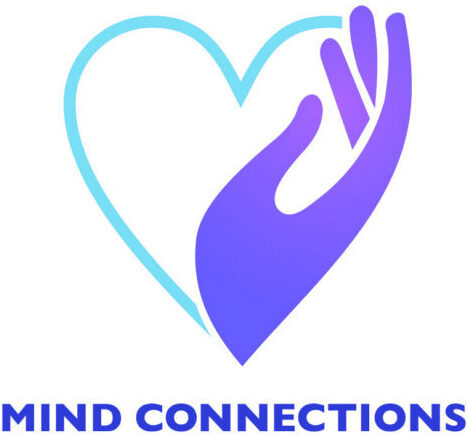Tips to Manage SAD Seasonal Affective Disorder
With daylight saving time ended, the days are shorter and the weather gets colder. It can be really challenging for some people during this time. Particularly in the winter season, if you feel blue, have low energy, lose interest, and sleep too much, you may be dealing with seasonal Affective Disorder (SAD) or seasonal depression.
Is seasonal depression real? Yes it is! In fact, seasonal affective disorder (SAD) affects many people in America. According to the American Psychiatric Association, about 5% of adults in the U.S. deal with SAD yearly. They also report that SAD typically lasts for about 40% of the year. Many times when you face depression, you feel very isolated and alone. Know that you are not alone! So many people in the world share your experience and understand your emotions. Seasonal depression affects people each year; you all deserve support during these times!
What is SAD?
SAD is a type of depression that is caused by the seasonal changes. The fall leaves changing along with the crisp autumn air is a beautiful transformation of our environment. During these changing times, people with SAD will feel changes in themselves too. These changes don’t feel as hopeful as the colorful leaves filling each tree. People with SAD start feeling symptoms of depression when fall arrives and eventually turns to winter. Correspondingly, some people feel seasonal depression in the spring/summer months. It all depends on your own unique body and predispositions.
Symptoms of Seasonal Affective Disorder
You may ask, “Do I have seasonal depression?” If you or a loved one seem to be feeling sad and discouraged during the colder months, you may be showing signs of SAD. Specifically, SAD Seasonal Affective Disorder symptoms include:
- Constant depressive feelings
- Changes in sleeping and eating patterns
- Eating or sleeping more or less than usual
- Feeling hopeless, agitated, or having low energy
- Social withdrawal
- Noticing these symptoms appear around the same time each year (when the seasons change)
As you can see, many of the symptoms of seasonal affective disorder are the same as the ones for depression. This is because, as mentioned before, seasonal affective disorder is a specific type of depression. Therefore, seasonal affective disorder treatment is similar to ones for depression.
Why does Seasonal Depression Happen?
When you are experiencing the winter blues, you think to yourself, “Why do I have seasonal depression? Why is this happening to me?”
It can feel stressful and upsetting to feel this way each year. There are a few biological reasons why you are experiencing this type of depression. According to the Mayo Clinic, seasonal depression can be caused by varying levels of hormones in the body. Researchers consider the changing levels of serotonin and melatonin to be a potential cause of SAD.
When fall appears and turns into winter, the light starts disappearing quicker in the day. Night time creeps up and before you know it, the day is done. The lack of sunshine in each day feels like it leads to less sunshine in people’s moods. That is, the joy they once had during the prior season turns into depressed emotions. Researchers think that SAD might be caused by the lack of sun light you are receiving in the fall and winter.
Many people value and honor the powers of the sun. Sitting in the sun is warm and inviting. The sun also provides many benefits like helping prevent from different disorders, promoting strong bones, and fighting against SAD.
Seasonal Affective Disorder Treatment
How to treat seasonal affective disorder? Previously mentioned, SAD is treated in similar ways to depression, but utilize other methods specifically for SAD. Here are some ways to receive relief from your SAD symptoms:
1. Cognitive Behavioral Therapy for seasonal affective disorder
Cognitive Behavioral Therapy (CBT) is a well-regarded treatment for depression. This type of therapy challenges negative or catastrophic thoughts and helps reframe them to be more positive/ realistic. Psychologists have also created a specific CBT for people with SAD (CBT-SAD). According to the NIH, this type of CBT is performed in group therapy sessions that helps people reframe thoughts during the colder months and engage in helpful activities.
2. Light Therapy
Light therapy is typically the first line treatment for SAD. The NIH also mentions the benefits of light therapy for people with SAD. This type of therapy involves just what the title describes: a light box. This box is used to give people with SAD the imitation of light they have been lacking in the colder months. Typically, you’ll sit in front of the light box for about 20 to 30 minutes a day. This will result in a chemical change in your brain that boosts your mood and alleviates symptoms of SAD. Many people also invest in lamps for SAD that give a similar affect to this therapy.
3. Antidepressants
A prescription for antidepressants may help you to reduce seasonal depression. Generally speaking, antidepressants for SAD require medication use from fall until spring
4. Aromatherapy
Aromatherapy is the use of essential oils for therapeutic purposes. Research showed that essential oils could potentially help lessen symptoms of depression, anxiety, and sleep problems. With regards to SAD, essential oils could potentially influence the area of the brain for controlling moods and the body’s internal clock; hence impacts sleep and appetite.
5. Dawn Stimulator
Dawn simulators can help with SAD. These devices are alarm clocks, but rather than waking you abruptly with beeping or loud music, they produce light that gradually increases in intensity, just like the sun.
6. Supplements for seasonal affective disorder
According to research studies, vitamin D and lack of sunlight exposure could potentially lead to seasonal depression. Making sure to have enough vitamin D is essential to reduce the risk factor of SAD.
Tips to Deal with SAD or Seasonal Depression
If you have SAD or feel depressed, know that you will be OK! The power and strength you have within yourself can help you through anything. Sometimes, people just aren’t aware of how resilient they truly are.
1. Feel Your Emotions
SAD or seasonal depression makes many people isolate from others. It feels exhausting being social or sharing your feelings when you have low energy and sadness creeping into your life. While being alone, you can truly create a safe space catered to your needs. You, more than anyone, know what you need to feel safe and supported. While being alone, you can immerse yourself in self-exploration and embrace your feelings. If you get shy showing your emotions to others, this solitude can benefit you.
Cry if you need to, write about what you are going through, and do self-care that makes you feel better. This can be indulging yourself in any hobby or activity that brings you inner-peace and happiness.
2. Positive Self-Talk
In life, it is so crucial for us all to believe in ourselves. When we put ourselves down, it can lead to low self-esteem. Also, when we talk negatively about ourselves, others may think it is OK to do the same. Remember that people should never make you feel bad about being you, you are deserving or respect and care always!
When you are alone, it can be nice to practice positive self-talk. Use positive affirmations and work on valuing the great things about yourself. Writing gratitude lists about yourself and what you are thankful for can also help you see the value you possess.
3. Journal Your Feelings
When you lack a support system or are alone, you might feel like you are lacking someone who can ask you the tough questions of life. Remember that, you can be that person for yourself! Journaling is a way to explore your thoughts and use prompts as ways to do so.
Here are some prompts that will help you get to know yourself and emotions better:
- How am I feeling today?
- Do I feel better or worse from yesterday?
- What can I do to help myself feel happier?
- Name three things you like about yourself.
- List 5 accomplishments you have in your life.
- Describe an activity you enjoy doing…then do it!
4. Exercise
Exercise has been seen to boost feel-good hormones like serotonin. The lack of sunlight intake and decreasing levels of serotonin is one of the contributing causes to SAD. Exercise can be a great way to get your body moving, stay active in the fall/winter months, and act as type of seasonal affective disorder treatment.
Exercise ideas for Seasonal Affective Disorder Treatment:
- Taking a brisk walk outside and appreciating the nature around you
- At-home work-out videos
- aerobics, stretching, weight lifting, HIIT exercises
- Dancing to fun and festive holiday songs
5. Mindfulness
Mindfulness activities can help someone with SAD gain acceptance over their feelings. They might not like the way they during the seasonal changes, but they can accept that it is happening a take steps to alleviate symptoms.
Mindfulness Practices:
- Meditation
- Yoga
- Mindful walks
- Going on walks in nature and engaging your five senses to really take in the world around you
- Mindful Eating
- Eating while being fully present, focusing on nourishing your body, and sitting in silence/without distractions
- Adopting mindful attitudes into your day
The 9 Attitudes of Mindfulness
As mentioned in our article about Toxic Positivity, there are 9 attitudes of Mindfulness:
- Beginner’s mind
- Appreciate the newness of each moment
- Non-judging
- Pay attention on purpose and non-judgmentally.
- Acceptance
- Embrace things for what they are.
- Trust
- Trust your body and how it supports your life.
- Letting go
- Let life exist as it is. Do not get caught up in having things turn out a certain way.
- Patience
- Recognize that you will have to wait for certain things
- Non-striving
- Navigate the unfolding of life without any agenda or expectation.
- Gratitude
- Be grateful for all that you have
- Generosity
- Recognize how powerful it is to make others happy. Generosity enhances your relationships and shows that you care
6. Seek social support and improve social activities
Dealing with any form of depression can be challenging. One major symptom of depression and SAD is isolating oneself. When you feel down about life, it is easy to close yourself off from others and be on your own.
Many people say to lean on people when you feel depressed or anxious. Support systems are useful helping someone’s saddened/hopeless state. Support systems bring and sense of security to people who feel alone in this world. What happens when you lack a support system? Or what about people who isolate themselves during these episodes and like to handle situations on their own?
Especially since COVID started, many people have become used to being alone or isolating. COVID has changed the world in so many ways and has altered our behaviors as a society. We need to revaluate many ideas we once had about people; this can include thoughts about lack of social systems or not being able to access them.
7. Keep a routine or schedule
Winter depression tends to make you stay in bed and want to sleep more. That said, maintaining a regular schedule improves sleep, which can help alleviate symptoms of seasonal depression.
8. Take a winter vacation or staycation
Take a winter vacation to warmer climates to get more sunshine. By doing so, it can help to alleviate symptoms of SAD. Even if it is a brief getaway, your winter depression can be alleviated significantly. In addition, your mood can already be different when you prepare for your vacation and review all the photos after you come back home. Due to COVID, you may not travel far. In that case, even a staycation could help boost your mood.
9. Speak to a Therapist
If you are someone who is isolated or lacks emotional support in your life, a therapist can help. A therapist for seasonal depression acts as a third-party opinion for your life. They are trained to help you with whatever symptoms or experiences you are facing.
Sharing your thoughts with a therapist might feel intimidating, but know that they are trained professionals who can provide you with a safe space to feel your emotions and heal. A therapist might also be able to help you venture off one day and find people who you can become your social support. They can help you build the confidence to put yourself out there and meet new people. The therapists at Mind Connections would love to help you with all of these things! Call us now to learn how our team can support you.
Content Creator, Victoria Gallo; Reviewed by Dr. June Cao




